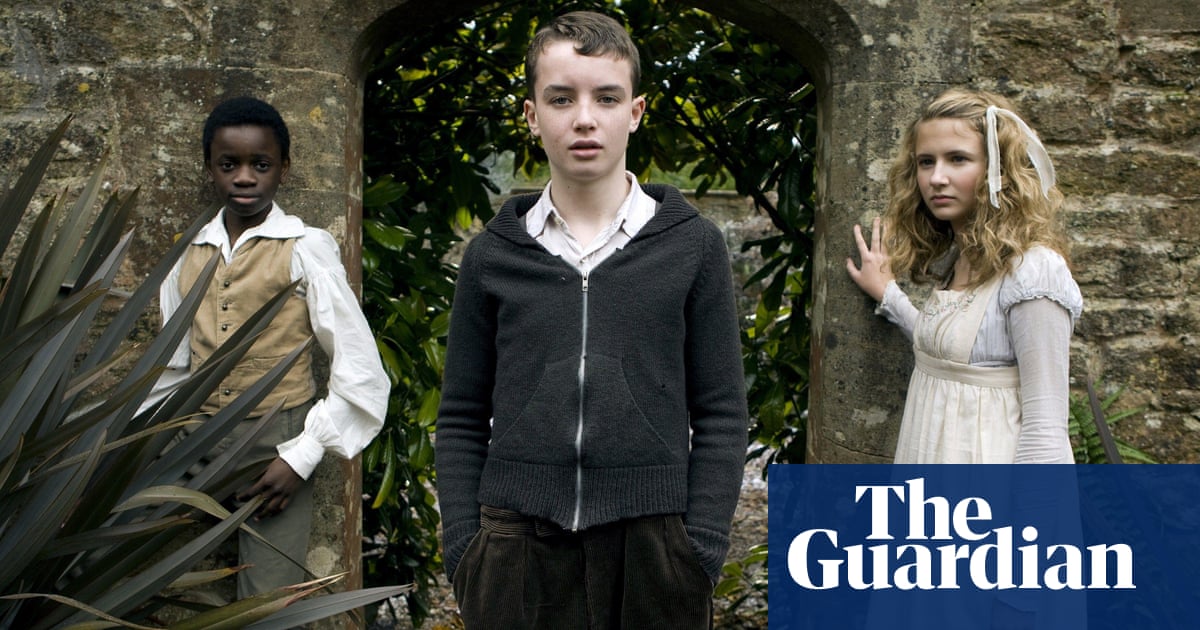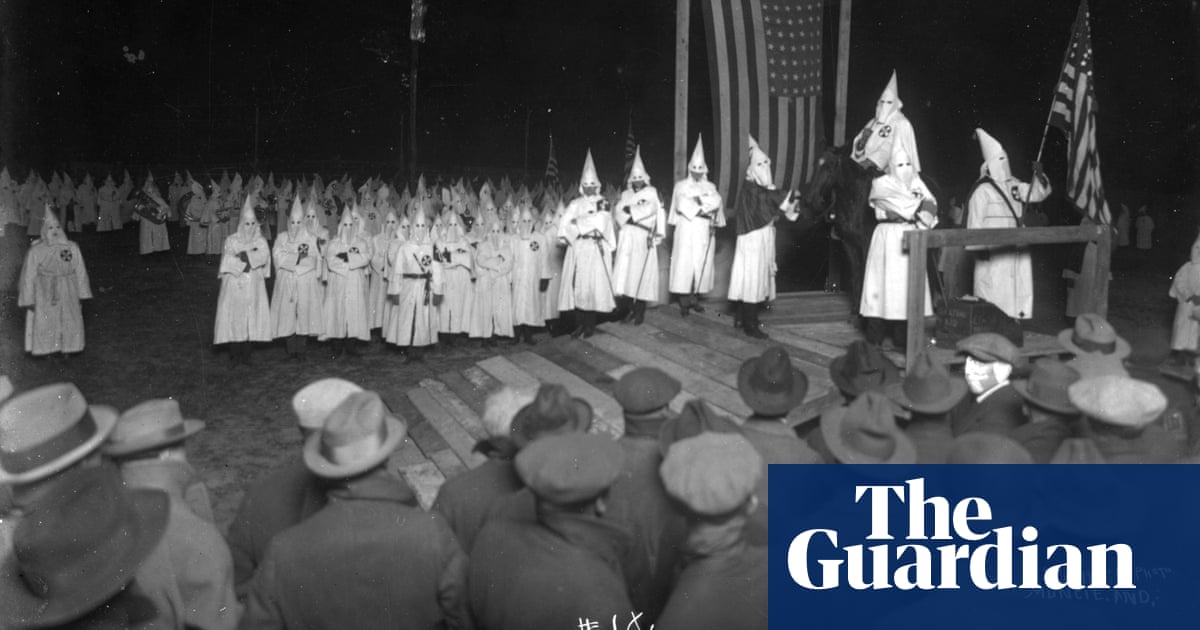
n the first episode of Lovecraft Country, Korean war veteran Atticus “Tic” Freeman (Jonathan Majors) is heading north to Chicago when he gets chatting to a fellow passenger, an older woman, in the “colored” section of the bus. He tells her about the book he’s been reading since before they crossed the Kentucky border. It’s the first instalment of Edgar Rice Burroughs’s sci-fi classic about John Carter of Mars, and when Tic is asked why he’d want to read a book with a slavery-defending Confederate officer for its hero, he tells her: “Stories are like people. Loving them doesn’t make them perfect. You just try to cherish them, overlook their flaws.” She looks askance at this, but Tic soon charms her with his enthusiasm: “I love that the heroes get to go on adventures in other worlds, defy insurmountable odds, defeat monsters, save the day. Little negro boys from the South Side of Chicago don’t get to do that.”
This same enthusiasm for all things sci-fi, fantasy and horror is evident in every frame of Lovecraft Country, a 10-part HBO series exec-produced by both Get Out’s Jordan Peele and JJ Abrams. The creative force behind it, though, is showrunner Misha Green, whose last series, the escaped-slave heist thriller Underground, also used light-footed genre conventions as a way into one of the heaviest periods of American history.
Once Tic reaches Chicago, he joins forces with his uncle George (Courtney B Vance), a compiler of Green Book-style safe-travel guides for African Americans, as well as childhood friend Letitia (Jurnee Smollett) and Letitia’s half-sister Ruby (Wunmi Mosaku). Together they have adventures in other worlds (including the dangerous Lovecraft Country of the title), defy insurmountable odds and defeat monsters. Unlike Tic’s pulp-fiction heroes, though, they must also contend with the real-world struggles of being black in 1950s America.
When this show is scary, it’s really scary, but there’s also a deeply rooted family drama here and moments of heart-pounding romance. It’s like Buffy the Vampire Slayer, where the “Big Bad” is always American racism in its various guises.
“Horror is my favourite genre,” says Green, who connected with Peele over this shared interest while his industry-quaking horror Get Out was still in post-production. “He was like: ‘Have you read this book?’” – referring to the original 2016 novel by Matt Ruff – “So we took a look and what was most exciting was this concept of reclaiming genres not typically meant for black people.” It was clear to Green that there was huge potential here, and for more than just a feature film: “How do we expand that and where do we go season after season? I’m not afraid of figuring it out, because there’s so much fertile ground for it, and so little of it that has been occupied by people of colour.”
The fact that this “fertile ground” of Lovecraft Country is both a cartographical territory and a cultural one will not be lost on those familiar with the horror genre. They’ll have already picked up on the reference to HP Lovecraft, the influential early 20th-century horror fiction author and creator of the “Cthulhu mythos”, who based his tales in and around the New England area where he lived. Winners of the annual World fantasy award received a trophy bust of Lovecraft’s elongated face until 2015, when it was changed following a campaign. The author is still well known in these circles for two things: firstly, his stories of tentacled multidimensional monsters, hidden societies and dark birthrights; and, secondly, his racism, rabid even by the standards of the time. This sometimes manifested in the tropes of his fiction and in other writing: his letters overflowed with antisemitic conspiracy theories and a 1912 poem, titled with a racial slur, detailed his beliefs about the subhuman nature of African Americans.
Generations of horror fans have, like Tic, attempted to overlook the “flaws” of their favourite authors, but separating art from artist is particularly tricky in the speculative genres, as Ebony Elizabeth Thomas, author of The Dark Fantastic: Race and the Imagination from Harry Potter to The Hunger Games has written. “Fantasy is created from the depths of a creative’s imagination. The act of ‘mythopoesis’ [myth-making] is one that requires much thought … Unless we’re thinking deeply about the fantasy worlds that we build, we will re-inscribe the cartographies of the known world into our stories.” The known world of Lovecraft, Burroughs and their fellow pulp-fiction pioneers was, of course, a racist one, mired in imperialism and an ideology of white, Anglo-Saxon, Protestant supremacy. It seems noteworthy that Lovecraft’s lifespan roughly overlaps with the 50-year period of intense racial terrorism known to American historians as “the Age of Lynching”.
A century later, the capacity of horror to expose the society that produced it is also what makes it an intriguing creative mode for African-American artists with a different agenda. Lovecraft Country joins a conversation that already includes Jordan Peele’s Get Out and Us, Nia DaCosta’s upcoming Candyman sort-of sequel, time-travelling Janelle Monáe horror Antebellum, Octavia Spencer’s “Mammy”-subverting turn in Ma and some of the darker episodes of Donald Glover’s Atlanta. “Get Out definitely brought it to the mainstream, but you can look back at the original Night of the Living Dead and that’s definitely a commentary on racism,” says Green. “The horror genre has long been used to uncover the dark underbelly of things … But I think horror has always been a way to put a fantastical layer over something dark and enter into it, in a safer way.”
Where Jim Crow-era America is concerned, that fantastical layer need only be gossamer-thin, so close to the surface is the real horror. The storylines of Lovecraft Country often involve only the slightest twists on historical fact: What if the grand wizards of the KKK were also wizards of the spell-casting kind? What if the past that still haunts us had a poltergeist’s powers? What if it were truly possible for prospective employers to look at a black woman and “not see skin colour”?
This mixture of pulp fiction and something more strikingly real appealed not only to Green but to her cast.
Wunmi Mosaku (Luther) says that, while usually not a horror fan, she was happy to make an exception here. “It’s not just a flat 2D horror thing at all. The jigsaw of it is absolutely 3D. Also the fact that it’s set in the 50s, in the South Side of Chicago, the fact that 95%, maybe more, of the people on screen are gonna be black … It doesn’t feel like a generic horror. It’s something I’ve never experienced, like, at all!”
Courtney B Vance, who plays Tic’s uncle George, would agree with this assessment. He’s a multiple award-winning actor, recently playing flamboyant lawyer Johnnie Cochran in American Crime Story: The People vs OJ Simpson. He says he’s played civil rights-era characters “sooo many times”, but even from this perspective Lovecraft Country feels like something new. “I don’t think it would have been made five or 10 years ago. And nor do I think that a black woman would be at the helm. We were told forever that black doesn’t translate overseas and won’t make money and then, when Black Panther happens and the billion-and-a-half dollars are made, then hopefully you can get back to just building the story and letting the people come. Stop talking about, well, ‘it’s a black this or that’. Put in the black people! Put in the trans people! Put in the people with disabilities! Put the people in there and tell the story! Shut the mouth; tell the story!”
Lovecraft Country represents a new era of diversity both in front of and behind the camera, and a welcome one, too, but what do we do with the old fan favourites that no longer quite fit? This is something Vance has been grappling with since at least 1993, when his casting alongside a 12-year-old Elijah Wood in Disney’s adaptation of The Adventures of Huck Finn was met with surprise. “I remember when the role came up of N-word Jim,” he recalls. “I had just done Fences on Broadway and people still had in their minds, because I went to Harvard and Yale, that he’s very, very erudite and educated, and N-word Jim is gonna be too much of a stretch for him.”
He felt compelled to prove the doubters wrong and, to this day, it’s not the historical racism of texts that disturbs Vance, so much as the contemporary resistance to tackling racism head on. “Let’s begin a dialogue about what life was like for folks of colour back – black – in the day. I mean what’s the harm in talking about it? White folks don’t know and some black people don’t know. So it’s an opportunity to educate. They pulled Gone With the Wind [from HBO’s new streaming service] and I said: ‘Why? A minute ago, you were in our face with it. Now you’re telling everybody it’s no good? Stop that! Just talk about it.’” (HBO later restored the film to the service with a disclaimer providing historical context about the film’s depiction of slavery.)
Like Tic and his friend from the bus, culture consumers have tended to split into two camps: those who feel the problems in their problematic faves can be overlooked with enough enthusiasm; and those who’ve been permanently put off – or excluded from – certain works, artists and even entire genres. Lovecraft Country points towards a third option that could hardly be more timely. “The best horror is when [it’s] saying that the way to escape it is to speak it, is to live it,” says Green. “It’s about confrontation, then moving through the dark into the light.” You can’t ignore the monster, in other words; you have to fight it.












